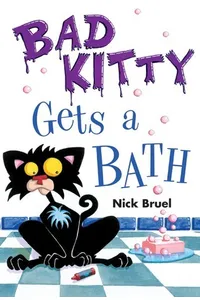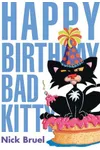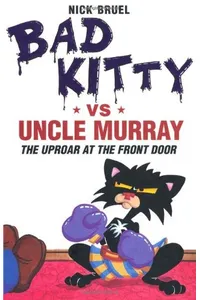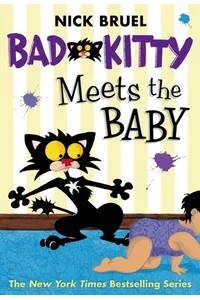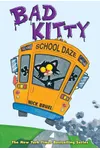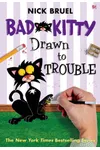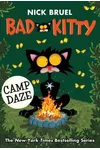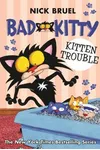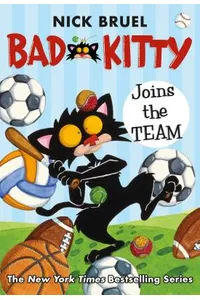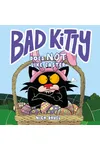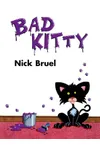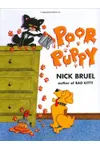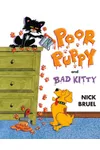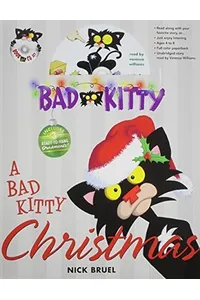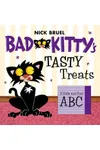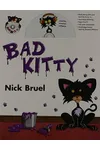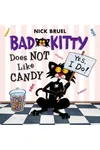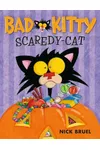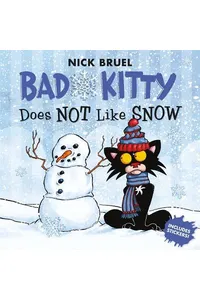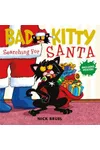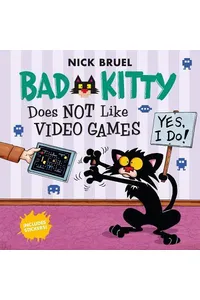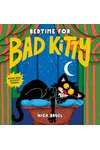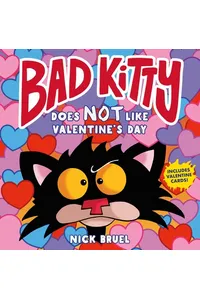Step into the chaotic, laugh-out-loud world of Bad Kitty, where a mischievous housecat named Kitty turns everyday life into a whirlwind of fun and mayhem! Created by Nick Bruel, this beloved children’s series blends picture books and chapter books, capturing young readers with its clever humor, alphabetical adventures, and relatable feline antics. Since its debut in 2005, Bad Kitty has become a staple in children’s literature, delighting kids and parents alike with its witty storytelling and vibrant illustrations.
With a knack for getting into trouble, Kitty’s escapades resonate with anyone who’s ever dealt with a picky pet or a bad mood. From alphabet-driven picture books to hilarious chapter book sagas, the series grows with its readers, making it a purr-fect choice for early readers and cat lovers everywhere.
How Bad Kitty Began
Nick Bruel, a New York Times bestselling author and illustrator, dreamed up Bad Kitty inspired by his childhood cat, Zou-zou, a petite feline with deep black fur and a single white tuft on her chest. Bruel channeled the universal sass and self-importance of cats into Kitty’s personality, launching the series with the 2005 picture book *Bad Kitty*. Originally an alphabet-themed story, it showcased Kitty’s dramatic reaction to a veggie-only diet. The book’s success sparked an expanding universe of picture books, chapter books, and even graphic novels, each brimming with Bruel’s bold illustrations and quirky humor.
The Heart of Bad Kitty
The *Bad Kitty* series spans a delightful mix of formats, with standout titles like *Bad Kitty Gets a Bath* (2008), *Happy Birthday, Bad Kitty* (2009), *Bad Kitty Meets the Baby* (2011), and *Bad Kitty for President* (2012). In *Bad Kitty Gets a Bath*, Kitty’s hilarious resistance to bath time teaches kids about pet care through Uncle Murray’s fun facts. *Happy Birthday, Bad Kitty* throws Kitty into a chaotic party with strange guests, exploring friendship and celebration. *Bad Kitty Meets the Baby* tackles jealousy when a new “pet” (a human baby!) arrives, while *Bad Kitty for President* humorously introduces civic concepts like elections.
The series shines through its themes of behavior, pet ownership, and the consequences of actions, all wrapped in a lighthearted, accessible style. Bruel’s use of alphabetical lists—think foods from asparagus to zucchini or misdeeds from “ate my homework” to “zeroing the zinnias”—adds educational value, making learning fun. Set in Kitty’s cozy yet chaotic home, the stories burst with expressive watercolor illustrations, capturing her devious charm and countless facial expressions. Whether she’s clashing with Uncle Murray or scheming against Puppy, Kitty’s world is a playful reflection of childhood emotions and growth.
Why Bad Kitty Resonates
*Bad Kitty* has left paw prints on children’s literature, earning accolades like the Wyoming Buckaroo Book Award and a spot on New York Times bestseller lists. Its blend of humor and heart appeals to early readers aged 4–10, while parents enjoy the clever wordplay and relatable pet struggles. Despite being the 37th most banned book in the U.S. from 2010–2019 due to its cheeky tone, its popularity endures, with fans on platforms like Reddit sharing nostalgic love for Kitty’s antics. The series’ versatility—spanning picture books, chapter books, and boxed sets—ensures it grows with its audience, fostering a lifelong love for reading.
With a TV series in development, Bad Kitty’s cultural impact continues to grow, proving that one naughty cat can capture hearts worldwide. Its legacy lies in making mischief educational and unforgettable.
- First Book: *Bad Kitty* (2005)
- Book Count: Over 20, including picture books, chapter books, and activity books
- Awards: Wyoming Buckaroo Book Award
- Fun Fact: Kitty’s look is based on Bruel’s childhood cat, Zou-zou
Grab *Bad Kitty* and dive into a world of feline fun, where every page is a new adventure in mischief and laughter!
